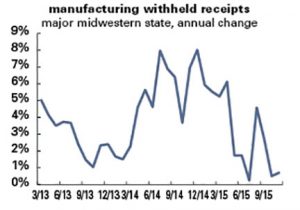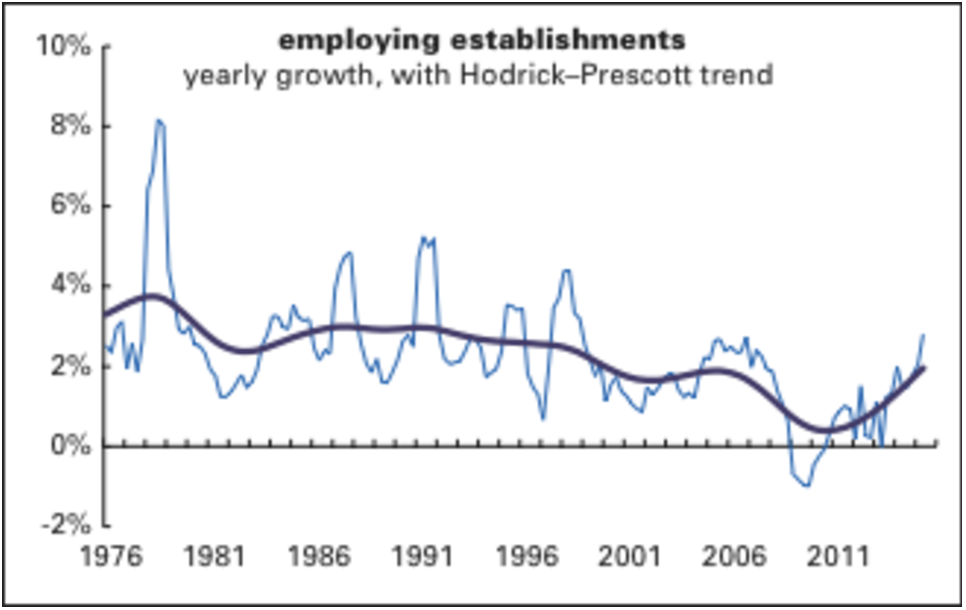Stanley Fischer on the ZLB
In a speech to the American Economics Association’s annual meeting, Fed vice chair Stanley Fischer asked some important questions and provided few explicit answers. (He admits this himself; it’s not a reader’s uncharitable judgment.) Much of it is inspired by the zero lower bound (ZLB), but Fischer’s attention roams widely around from that starting point.
His first stop is the possibility that we’re moving towards a world with a “permanently lower long-run equilibrium interest rate,” aka r*. We’ve always been skeptical of that concept, for a number of reasons. You can’t see it, and every attempt to estimate it statistically winds up with different results. Maybe there are several points of equilibrium—a high-employment and a low-employment equilibrium, for example. Or maybe something as turbulent as a modern capitalist economy has no point that’s durably stable enough to deserve the name equilibrium.
But we don’t have seats on the FOMC, so we must bracket these concerns. A number of recent empirical efforts have found that r* is close to zero, and this empirical work has found theoretical support in Lawrence Summers’ argument that we are in a state of secular stagnation. When combined with low inflation, interest rates will spend a lot of time at or near the zero line, which makes life very difficult for central bankers.
What to do? One option is to raise the inflation target from the semi-official 2% to some unspecified higher level. To Fischer, this is risky business, and it seems to hold little appeal for him. Another possibility is to adopt negative interest rates—a strategy that some European countries have experimented with—but Fischer also finds this problematic, at least in the short term.
A third approach, about which Fischer says nothing negative (unlike most of his other propositions) is raising r* through expansionary fiscal policy. “In particular,” he observes, “the need for more modern infrastructure in many parts of the American economy is hard to miss. And we should not forget that additional effective investment in education also adds to the nation’s capital.” It might be possible to manipulate the yield curve, allowing short rates to rise for the sake of normal policy and money market functioning while keeping economically sensitive long rates down. That could be accomplished through continued long-term asset purchases by the Fed and a shortening of maturities by the Treasury.
Central bankers are expected to be discreet, and Fischer is well-practiced. But occupationally adjusted, he’s calling for a more stimulative fiscal policy to counter what could be a bout of long-term economic stagnation. There’s certainly room to boost public investment: as the graph on p. 5 shows, after depreciation, civilian public investment hasn’t been this low since the World War II mobilization.
Fischer stepped out of normal central bankerly discretion to endorse raising rates to prick an asset bubble, a controversial position in the trade. While he thought macro-prudential tools might be appropriate—capital requirements, or restrictions on loan-to-value ratios—the Fed doesn’t have the freedom to wield such tools that its foreign counterparts have. So, “if asset prices across the economy…are thought to be excessively high, raising the interest rate may be the appropriate step,” he concluded. One awaits the declassification of FOMC transcripts to see what Fischer is saying behind those big wooden doors—and how his colleagues are reacting.
Although Fischer said in the speech that r* was likely to stay low “for the policy-relevant future,” he disclosed on Wednesday that the markets are wrong if they’re only expecting two rate hikes this year. Of course, four quarter-point hikes would amount to just a single percentage point, which isn’t all that far from zero.






’flation
The late Ed Hart of the late Financial News Network used to refer to the set of topics around broad price changes as “’flation,” which neatly covers inflation, deflation, and disinflation in a single word.
Some analysts in the U.S. are getting worried about the “in-“ kind of ’flation. With core inflation hitting 2.2% for the year ending in January—though the headline figure, dragged down by the collapse in oil prices, was just 1.3%—hawks are fretting that the Fed has fallen behind the curve.
Maybe, but maybe this is better news than it seems. Graphed below are headline and core inflation for the U.S., the eurozone, and Japan. The latter two are in or near deflation, a sign of profound and extended economic weakness. The U.S., for all its troubles, is not suffering from those maladies. That 2.2% core reading is just slightly above the average since 2000; the 1.4% headline is 0.8 point below that average.
It might be a good idea to relax and give thanks that the U.S. is not caught in what our beloved if irascible John Liscio used to call “the tractor beam of deflation.” There’s plenty of time to get on top of this one if the rise persists.